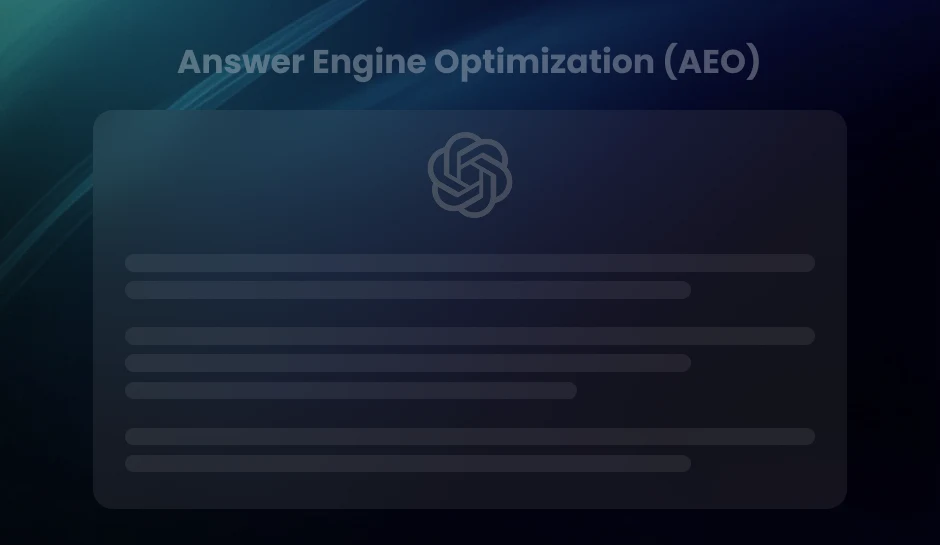
Future-Proofing Your Marketing Strategy with Attribution Model Software
Attribution model software is revolutionizing how businesses evaluate their marketing efforts. With the ability to track customer touchpoints and optimize investments, this software provides actionable insights to improve ROI, refine strategies, and boost overall performance. Stay ahead of the competition with data-driven decision-making. Read on.
How confident are you that your marketing dollars are driving the right results? For many businesses, understanding the true impact of their marketing efforts remains a daunting challenge. With campaigns running across multiple channels, it often feels impossible to determine which initiatives fuel growth and which are simply draining resources.
Traditional approaches to attribution often leave decision-makers grappling with fragmented data, outdated insights, and oversimplified metrics. This not only hampers strategic planning but also risks misallocating budgets, ultimately stalling business momentum.
Enter attribution model software—an advanced solution designed to bring clarity to the chaos. By leveraging sophisticated analytics and real-time insights, this software empowers businesses to identify high-performing channels, optimize investments, and align marketing strategies with revenue goals.
Key Benefits of Attribution Model Software
Attribution model software is more than just an addition to your marketing toolkit. It redefines how you measure and refine your marketing strategies. Here is a breakdown of its significant benefits:
1. Accurate ROI Measurement
Attribution model software eliminates uncertainty by providing detailed insights into your marketing return on investment (ROI). It accurately assesses the impact of each channel, campaign, and touchpoint, enabling you to:
- Spot High Performers:
- Minimize Wasteful Spending:
- Defend Marketing Investments:
Identify the most effective channels and campaigns driving conversions and revenue.
Detect underperforming channels and reallocate resources to more profitable areas.
Use precise data to showcase the value of your efforts to stakeholders.
For instance, a customer might engage with your brand through a Facebook ad, read a blog post, and then convert via an email offer. Traditional last-click attribution would credit the email alone, but multi-touch attribution reveals the role of the Facebook ad and blog post in influencing the conversion. This comprehensive perspective enables smarter decisions about your marketing mix.
2. Informed Decision-Making
In a data-rich environment, intuition is no longer enough for effective marketing. Attribution model software empowers you with actionable insights to enhance decision-making:
- Strategic Budget Allocation:
- Real-Time Campaign Optimization:
- Targeted Audience Insights:
Invest in channels based on their actual impact on revenue rather than assumptions.
Identify underperforming areas within campaigns and adjust strategies based on data.
Analyze customer behavior and refine messaging for specific audience segments.
Attribution data shifts your focus from reactive to proactive marketing, driving improved results through informed strategies.
3. Deep Customer Insights
Attribution model software sheds light on the complete customer journey, offering valuable insights into how consumers engage with your brand across various touchpoints. With this information, you can:
- Deliver Personalized Experiences:
- Identify Key Touchpoints:
- Enhance Engagement:
Craft messages and offers that align with customer preferences based on their previous interactions.
Recognize the pivotal moments in the customer journey and optimize them to boost conversions.
Develop content that resonates with your audience at each stage of their journey.
Understanding customer behavior at a granular level helps you create meaningful connections and foster long-term loyalty.
4. Optimized Campaign Performance
By analyzing which channels and strategies yield the best results, attribution model software helps refine your campaigns for maximum impact:
- Fine-Tune Content Strategies:
- Improve Channel Effectiveness:
- Enhance Targeting and Messaging:
Identify content that performs well at various funnel stages.
Tailor your approach to each platform’s unique role in the customer journey.
Reach the right audience at the optimal time with tailored offers.
Continuous analysis and data-driven adjustments ensure sustained improvements in your marketing efforts, boosting overall performance.
Key Features to Look for in Attribution Model Software
Not all attribution model software is created equal. For businesses aiming to make data-driven decisions, selecting the right platform is critical. Here are the key features to prioritize when evaluating attribution software:
1. Cross-Channel Tracking
Modern customers interact with brands across multiple touchpoints—social media, email, websites, and offline channels. The software should provide seamless tracking across all these channels, ensuring no interaction is overlooked.
2. Multi-Touch Attribution
Multi-touch attribution is essential for understanding the role of every customer interaction. Look for software that goes beyond single-touch models, offering insights into how various touchpoints contribute to the final conversion.
3. Real-Time Analytics
In a fast-paced market, delayed insights can result in missed opportunities. Real-time reporting enables businesses to track campaign performance instantly and pivot strategies based on what is working.
4. AI-Driven Insights
Advanced attribution model software leverages AI and machine learning to analyze complex datasets, uncover hidden trends, and provide actionable recommendations.
5. Data Integration Capabilities
The software should integrate seamlessly with existing tools like CRM, marketing automation platforms, and advertising networks. This ensures a unified view of your data for better decision-making.
6. Predictive Analytics
In addition to analyzing past performance, look for software with predictive capabilities. This feature helps forecast the potential impact of marketing investments, empowering businesses to make proactive decisions.
7. Scalability and Customization
As businesses grow, their needs evolve. The chosen software should scale effortlessly and offer customizable models to align with specific industry requirements and business goals.
How Attribution Model Software Supports Strategic Decision-Making
Data-driven decision-making is no longer optional; it is a necessity for businesses that want to thrive in a competitive environment. Attribution model software provides a foundation for smarter, more strategic decisions by offering actionable insights into the customer journey.
1. Clarity on Customer Behavior
Attribution software reveals how customers interact with your brand at every stage of their journey. This visibility helps identify which channels, campaigns, or touchpoints are driving engagement, allowing businesses to focus on strategies that resonate with their audience.
2. Optimizing Marketing Investments
Marketing budgets are often limited, making it crucial to invest in initiatives that deliver results. Attribution model software helps pinpoint high-performing campaigns and channels, ensuring that resources are allocated to efforts with the greatest impact.
3. Aligning Marketing and Sales Goals
One of the biggest challenges in business is bridging the gap between marketing and sales teams. Attribution software provides unified data that both teams can rely on, fostering collaboration and ensuring that marketing strategies align with sales objectives.
4. Forecasting Outcomes with Confidence
With predictive analytics and AI-driven insights, attribution model software can forecast the potential outcomes of marketing decisions. This reduces guesswork and enables leaders to approach strategies with confidence, backed by data.
5. Enhancing Agility in Decision-Making
In a constantly shifting market, agility is key. Real-time analytics from attribution software allow businesses to respond quickly to changes, optimize campaigns mid-flight, and address performance issues before they escalate.
6. Driving Long-Term Business Growth
By continuously refining marketing strategies based on detailed insights, businesses can create sustainable growth models. Attribution software ensures that every marketing effort contributes to the bigger picture—achieving long-term goals while maintaining profitability.
Choosing the Right Attribution Model Software
Choosing the right attribution model software is not just about selecting a tool—it is about equipping your business with the capability to make smarter, data-driven decisions. To ensure you make an informed choice, here is a comprehensive guide to what you should consider:
1. Define Your Business Goals and Challenges
Start by identifying what you want to achieve and the challenges you face:
- Goals:
- Challenges:
Are you focused on improving ROI, optimizing cross-channel campaigns, or gaining deeper insights into the customer journey?
Do you struggle with fragmented data, unclear performance metrics, or difficulty in linking marketing efforts to revenue?
Understanding your goals and pain points will help narrow down software that directly addresses your needs.
2. Prioritize Key Features
Modern attribution model software offers a range of features, but some are indispensable:
- Cross-Channel Tracking:
- Multi-Touch Attribution:
- AI and Machine Learning:
- Real-Time Analytics:
- Integration Capabilities:
- Privacy Compliance:
Ensure the software can track interactions across digital and offline touchpoints for a complete view of the customer journey.
Look for flexibility in attribution models, including linear, time-decay, and algorithmic approaches.
Advanced capabilities can process complex data, offer predictive insights, and identify patterns critical for decision-making.
Immediate insights help optimize campaigns dynamically, preventing wasted efforts and budgets.
The software should integrate with tools like CRMs, ad platforms, and email marketing systems for seamless data flow.
Features that align with GDPR, CCPA, or other regulations protect customer data and reduce legal risks.
3. Evaluate the Vendor and Support System
The software’s capabilities are only as good as the support behind it. Assess the vendor based on these factors:
- Reputation:
- Onboarding and Training:
- Ongoing Support:
Look for case studies, client testimonials, and industry awards to gauge credibility.
A robust onboarding process and user-friendly training resources are essential for a smooth transition.
Ensure the vendor offers accessible customer support, regular updates, and troubleshooting assistance.
4. Understand the Total Cost of Ownership (TCO)
The cost of attribution software is not limited to its licensing fee. Factor in:
- Initial setup costs, including integration with existing systems.
- Ongoing expenses for updates, maintenance, and support.
- The potential cost of scaling the software as your business grows.
Always evaluate whether the long-term benefits justify the cost. Some vendors offer flexible pricing models based on usage or organizational size, which can make high-value software more accessible.
5. Request Demonstrations and Trials
Seeing the software in action can help you determine if it aligns with your needs. During trials or demos:
- Test usability, especially for team members who will use the platform daily.
- Assess the accuracy and depth of insights provided.
- Compare reporting capabilities to ensure they offer the granularity you require.
6. Common Mistakes to Avoid
- Overlooking Customization:
- Focusing Only on Features, Not Outcomes:
- Choosing Based Solely on Cost:
Generic models might not align with your business. Ensure the software offers customizable attribution models tailored to your goals.
Features matter, but how those features translate into actionable insights is what delivers ROI.
While budget is important, prioritizing low-cost options without considering performance can lead to missed opportunities and wasted time.
7. Ensure Scalability and Flexibility
Your business needs today might not reflect what you will require in the future. Choose software that:
- Scales seamlessly as your organization grows.
- Adapts to emerging trends, such as cookieless tracking or integration with newer platforms.
Pro Tip- The right attribution model software does more than track metrics; it empowers businesses to link every marketing effort to measurable outcomes. By considering your goals, prioritizing essential features, and evaluating vendors carefully, you can select a solution that meets your current needs and sets the stage for long-term growth.
Challenges and Considerations
While attribution model software offers transformative potential, businesses must address several challenges to maximize its value.
Data Quality and Accuracy
One of the most significant challenges in attribution modeling is ensuring the quality and accuracy of data. Attribution insights are only as reliable as the data they are built upon. Issues like incomplete data, incorrect tagging, or siloed systems can compromise outcomes.
To address this:
- Ensure Robust Data Collection Processes:
- Implement Uniform Tracking Mechanisms:
- Leverage Data Cleansing Tools:
- Monitor and Validate Continuously:
Regularly audit data sources to verify their accuracy and completeness.
Standardize UTM parameters, event tracking, and data inputs across all marketing channels.
Invest in tools that identify and eliminate duplicate, inconsistent, or outdated records.
Establish processes to validate data and reconcile discrepancies in real-time, ensuring reliability.
Organizational Adoption
The most advanced attribution model software is ineffective if the organization does not embrace it. Resistance to change or lack of understanding can hinder its adoption.
To encourage buy-in:
- Educate Stakeholders:
- Align Goals Across Teams:
- Create Champions:
- Simplify the Insights:
Conduct workshops and training sessions to explain the value of attribution data and how it impacts decision-making.
Show how the insights align with broader organizational objectives, from marketing ROI to sales growth.
Identify and empower team members to advocate for and lead the software adoption.
Present data in user-friendly dashboards or reports that resonate with technical and non-technical stakeholders.
Staying Ahead of the Curve
Attribution modeling is not static. The rise of privacy regulations, the phasing out of third-party cookies, and advancements in machine learning continually reshape the landscape. Businesses must remain agile to adapt to these changes.
To stay ahead:
- Keep Abreast of Industry Trends:
- Invest in Scalable Solutions:
- Regularly Reevaluate Models:
- Foster a Culture of Innovation:
Regularly monitor updates on digital marketing and attribution methodologies, including cookieless tracking and AI integration developments.
Choose software that evolves with the market and incorporates emerging features like first-party data solutions and predictive analytics.
Review and update the attribution models you use to ensure they reflect current customer behaviors and market dynamics.
Encourage teams to experiment with new approaches and adapt strategies based on data-driven learning.
Key Takeaways
- Attribution model software empowers businesses with accurate insights into ROI, enabling strategic budget allocation and resource optimization.
- Multi-touch attribution provides a comprehensive view of customer journeys, helping identify high-impact touchpoints and refine marketing strategies.
- Advanced features such as AI-driven analytics, real-time tracking, and predictive insights ensure data-driven decision-making and campaign agility.
- The software’s scalability and integration capabilities make it a versatile solution for businesses aiming to adapt to evolving customer behaviors and privacy regulations.
- Proactively addressing challenges like data accuracy, organizational adoption, and market evolution ensures businesses fully leverage the potential of attribution model software.
Conclusion
Attribution model software is no longer a luxury for data-driven marketing; it is a necessity. By providing granular insights into customer behavior and campaign performance, it equips businesses to make smarter, faster, and more impactful decisions. From enhancing ROI to aligning cross-functional goals, the benefits are transformative. However, the key lies in choosing the right solution tailored to your needs and staying ahead of the curve through continuous adaptation.
Ready to transform your marketing strategy and drive measurable growth?
Just write to us at info@diggrowth.com and we’ll get back to you.
Ready to get started?
Increase your marketing ROI by 30% with custom dashboards & reports that present a clear picture of marketing effectiveness
Start Free Trial
Experience Premium Marketing Analytics At Budget-Friendly Pricing.

Learn how you can accurately measure return on marketing investment.
Additional Resources
Don’t Let AI Break Your Brand: What Every CMO Should Know
AI isn’t just another marketing tool. It’s changing...
Read full post postFrom Demos to Deployment: Why MCP Is the Foundation of Agentic AI
A quiet revolution is unfolding in AI. And...
Read full post postAnswer Engine Optimization (AEO): The New Frontier of SEO in 2025
As digital experiences continue to evolve, so does...
Read full post postFAQ's
Attribution software provides insights into the touchpoints that lead to customer conversion and engagement. By understanding these patterns, businesses can craft personalized experiences that enhance customer loyalty and increase retention.
Yes, most attribution model software integrates seamlessly with CRM platforms, allowing businesses to combine customer data from various sources for a unified, comprehensive view of performance and behavior.
Yes, attribution software can be tailored for businesses of all sizes. Many platforms offer scalable solutions that fit small businesses’ budgets while providing valuable insights to optimize marketing efforts and improve ROI.
Multi-touch attribution models track and assign credit across multiple touchpoints, offering a more accurate customer journey view. Single-touch models assign credit only to the first or last touchpoint, limiting insights into the full customer experience.
Privacy laws like GDPR and CCPA influence how attribution data is collected and used. Many attribution model software platforms are designed to ensure compliance with these regulations, protecting customer privacy while providing actionable insights.


